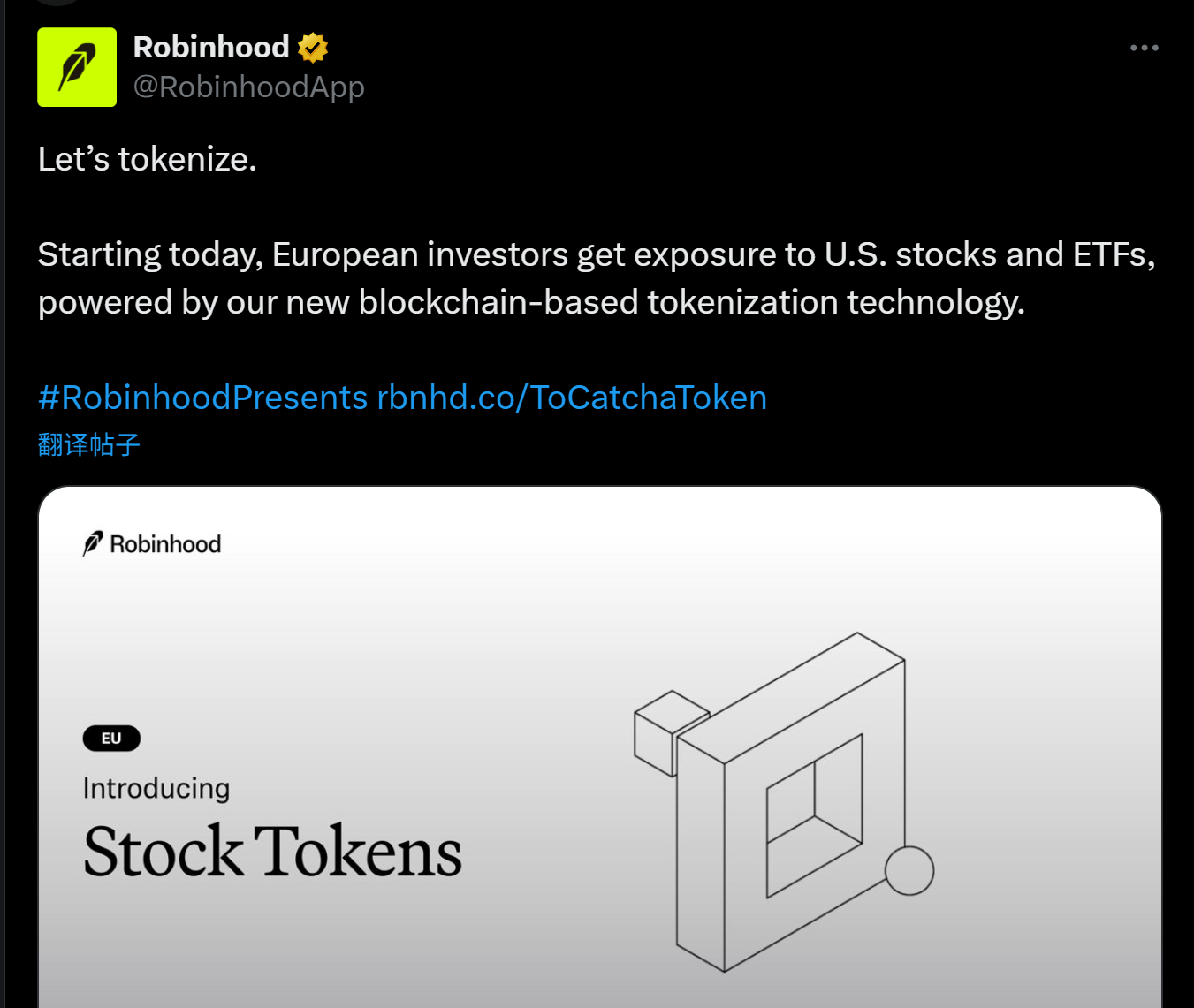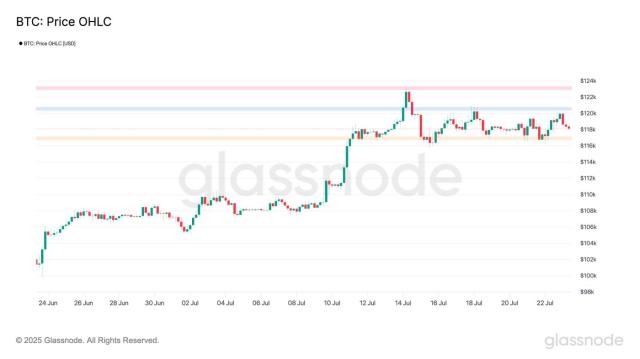Written by: imToken
At the beginning of this month, Robinhood and others announced support for stock trading on the blockchain and planned to launch their own public chains. Meanwhile, Kraken and others have successively launched trading pairs for stocks like AAPL, TSLA, and NVDA, sparking a wave of on-chain stock trading.
But is this really a new concept?
In fact, this seemingly sudden tokenization frenzy is the result of a seven-year evolution of asset on-chain development in the crypto world - from early synthetic asset experiments to stablecoin practical applications, and then to structured access of RWA (Real World Assets). The narrative of "Assets × Blockchain" has never been interrupted, and is now ushering in a more realistic and institutionalized restart.

Stock Tokenization: New Wine in Old Bottles
On the surface, stock tokenization seems like a new trend in the Web3 world, but it's more like a revival of an old narrative.
Users who experienced the previous on-chain boom cycle should remember the synthetic asset mechanism first explored by projects like Synthetix and Mirror, where users could mint "synthetic assets" anchored to stocks, fiat currencies, indices, or even commodities (such as sAAPL, mTSLA) by over-collateralizing native crypto assets (like SNX, UST), achieving an asset trading experience without intermediaries.
The biggest advantage of this model was no real asset custody and clearing, no counterparty matching, infinite depth, and zero slippage experience. However, the ideal was plump, but the reality was harsh - oracle distortion, asset volatility, frequent systemic risks, and lack of regulatory alignment led to these "synthetic assets" gradually exiting the historical stage.
Now, the stock tokenization trend is moving from "asset synthesis" to "actual stock mapping", marking a new stage of tokenization narrative entering "docking with off-chain real assets".
Taking the stock token trading products launched by Robinhood and others as an example, based on disclosed information, it involves rebuilding the on-chain channel and settlement structure for actual stock assets, namely stock custody, with funds flowing into stocks through compliant brokers.

Objectively speaking, although this model of stock tokenization still faces many challenges in compliance pathways and cross-border operations, for users, it can be considered a completely new on-chain investment window:
No account opening, no identity verification, no geographical restrictions - just a crypto wallet and a stablecoin can bypass traditional brokers' complex processes, directly trading stock tokens on DEX, achieving 7x24 hour trading, second-level settlement, and global borderless access. This experience is difficult for traditional securities systems to achieve, especially for non-US residents.
The establishment of this logic depends on blockchain's ability as an infrastructure for "clearing and settlement + asset confirmation", also reflecting the huge leap of Tokenization from technical attempts to actual user adoption.
Looking from a more macro perspective, "stock tokenization" is just a subset of RWA (Real World Assets) tokenization, reflecting the continuous evolution of asset on-chain narrative from token issuance to synthetic assets, and then to RWA anchoring since the Tokenization concept emerged in 2017.
[The translation continues in the same manner for the rest of the text, maintaining the specified translations for specific terms and preserving the original structure.]A notable trend is that mainstream players, including Robinhood, are successively announcing the launch of native or self-developed chains and supporting on-chain stock trading functions. From the currently disclosed information, the underlying technical cooperation partners for these tokenization paths are mostly still based on the Ethereum ecosystem (such as Arbitrum), which undoubtedly reaffirms Ethereum's core position as a Tokenization infrastructure.
The reason is that Ethereum not only has a mature smart contract system, a massive developer community, and rich asset compatibility standards, but more importantly, its neutrality, openness, and composability provide the most scalable soil for financial asset mapping.
Overall, if the previous rounds of Tokenization were driven by Web3 native projects as crypto financial experiments, then this time, it looks more like a professional restructuring led by TradFi - coming with real assets, real regulatory compliance needs, and global market demands.
Will this be the true beginning of Tokenization?
We wait and see.





